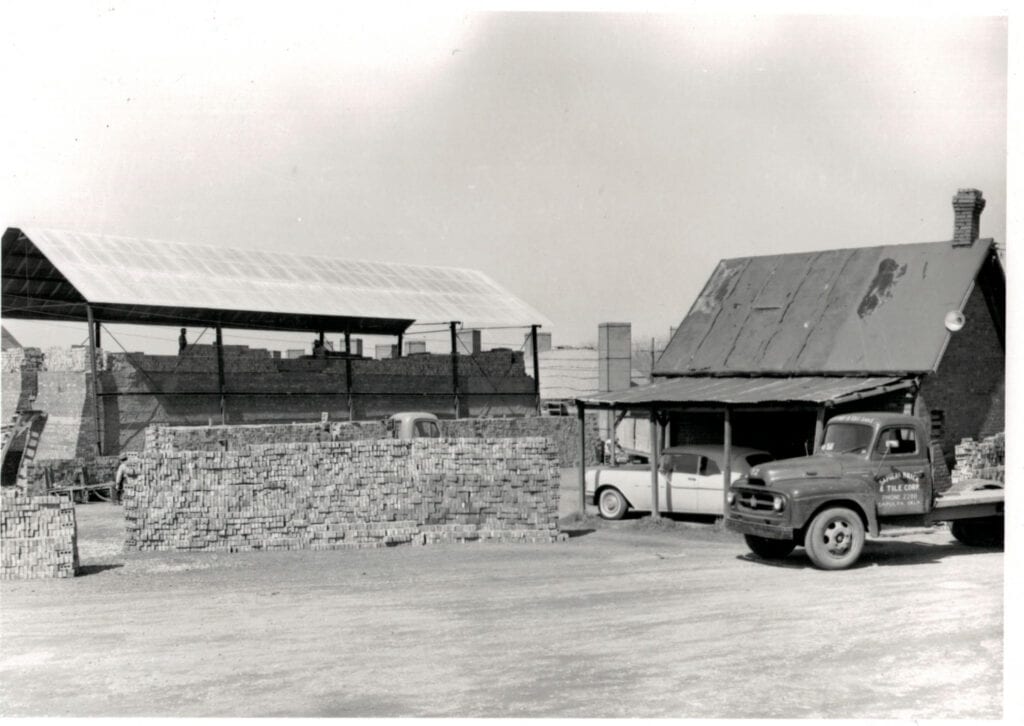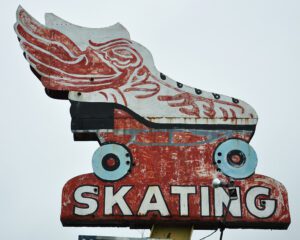Sapulpa was a center of commerce and industry even before statehood. Sapulpa Brick and Tile was founded in 1898, nine years before Oklahoma became a state. Nicholas Hermes (Richard Hermes’ grandfather) bought the business in 1925. In 1929, which was first year of the Great Depression, Earl Hermes (Richard Hermes’ father) moved from Kusa, Oklahoma to Sapulpa to help his father, Nicholas.
Kusa, northeast of Henryetta, sprung up in 1916. With a population that had grown to 3500, the city had become the largest in Okmulgee County. The railroad bypassed Kusa, in favor of Henryetta. This led to the demise of Kusa, relegating it to the list of Oklahoma Ghost Towns.
At one time there were two brick plants in Sapulpa: United Brick & Tile had a facility across the street from Sapulpa Brick and Tile. Eventually, United Brick & Tile closed their Sapulpa location. Well-known local entrepreneur Charles Hamilton bought the defunct facility and Sapulpa Brick and Tile became the only brick plant in town.
At the onset of WWII, there were two other competitors, United Brick & Tile, and Acme Brick. There was a “gentleman’s agreement” for brick sales during the war to be divided among the three companies. However, the other two companies tried to cheat Sapulpa Brick & Tile out of their share. Sapulpa Brick and Tile took their own customers and parted ways.
Acme Brick was bought by the Justin family, that onced owned Justin Boots. During the war, Sapulpa Brick & Tile sold bricks for the Douglas Aircraft Bomber Plant, where they manufactured the A-24, A-26, and the B-24 bombers.
Richard Hermes started working for his father in 1943, at the age of fourteen. He attended Oklahoma A&M (OSU), then came back to Sapulpa to help his father, Earl. While working at the brick plant, Richard went back to school at the University of Tulsa.
Like so many local business owners in Sapulpa, Earl Hermes gave back to the community by sponsoring a softball team. In 1955, The Sapulpa Brick & Tile team won the National Softball Congress World Championship by beating out every team west of the Mississippi. The magnificent, 3-feet-tall trophy resides at the Sapulpa Historical Society Museum.
In 1958, Earl Hermes died and his son, Richard Hermes, became president of the company. Sapulpa Brick & Tile soon established distributors across the U.S. and sold bricks throughout the country.
The May 5, 1960, tornado has a connection to Sapulpa Brick & Tile. The hill just south of the brick plant, where the company obtained their clay, changed the destiny of many people that afternoon. The twister was heading east and would have gone through the heart of the town, but the hill interrupted the vortex and caused the tornado to take a sharp left turn, heading due north, decimating the “Hill” and the area around the turnpike gate.
Sapulpa Brick & Tile bricks were used in hundreds of homes built in Sapulpa, and school buildings, such as the Sapulpa High School on Mission St., Woodlawn Elementary, and Washington School on Lee St. Richard Hermes said that local contractors knew they would get a quality product and a decent price from him. The Sapulpa Public School Board voted to buy bricks from Sapulpa Brick & Tile because they wanted to keep the money in the local economy.
Hermes said that the largest building project they sold bricks for was Bennett Hall at the Stillwater campus of OSU. He later stated that the “Most beautiful building” they sold bricks for was the main library at OSU, Stillwater.
Richard Hermes sold the plant in 1975 to Bartlett-Collins Glass. They ran the operation until the early ‘80s when the Bartletts sold the Glass Plant to Indiana Glass. Indiana Glass really didn’t want the brick plant but it was part of the deal. Irving Bartlett ran the brick plant for a year before the parent company shut it down.
Another chapter of Sapulpa’s industrial history closed, leaving only fond memories of a remarkable family of entrepreneurs who ran their company for half a century.
I wish to thank Richard Hermes the Sapulpa Historical Society for providing the information and photographs needed for this story.















